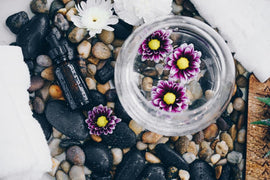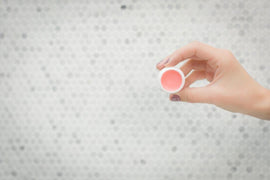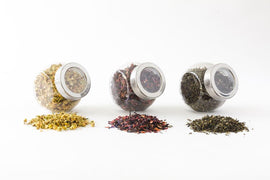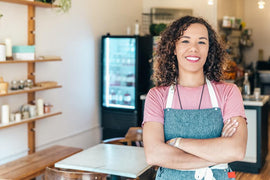7 Tips to Making the Perfect Cup of Herbal Tea for Health and Wellness


Herbal Tea for Health and Wellness
It's no secret that Tea has become the second most popular beverage in the world, trailing only water in popularity. Tea loving cultures of India, Great Britain, Canada and USA have helped fuel its popularity. Not to mention modern retail concepts so familiar to shoppers ... think David's Tea, Starbucks, and Tim Hortons can be found in shopping malls, fast food outlets and grocery stores in Canada and the United States. Similar to coffee, some of tea’s traditional appeal comes from its caffeine content, but the similarities end there. The caffeine content of tea is a central nervous system stimulant, optimizing mental alertness and physical reaction times, yet a fascinating amino acid found in tea – L-theanine exerts a calming effect. Drinking tea, especially herbal tea is healthy. Want to know all the benefits of loose herbal tea? You have come to the right place. Making herbal tea the wrong way can eliminate these benefits. The secrets to making the perfect cup of herbal tea help unlock the natural health benefits we are searching for:
- Abundance of polyphenols, a natural source of antioxidants and vitamins
- Immune boosting (think elderberries tea, mullein leaf tea)
- Energy boosting (think green tea, ginseng, ginger)
- Stress and anxiety relief (think chamomile)
Step 1: Source quality herbs for your herbal tea
It seems simple enough. But keep in mind that herbal teas don't come from tea leaves! Instead, they are sourced from the leaves, bark, fruits, flowers and roots of natural herbs and spices. Buy quality dried herbs and spices; and pay the premium to get the best ingredients. Less processing means more healthier benefits.


Step 2: Use the right quantity
Sounds simple enough. Nobody enjoys an overpowering cup of tea.
Rule of thumb is 2 grams of herbal tea for every cup of water.
Use a tea scoop to make measuring easy.
Step 3: Water quality
Who would have thought that water from your tap can make a good cup of tea ... gulp ... undrinkable! pH, mineral content, oxygen and water temperature will all impact the quality of your tea drinking experience. Practically speaking, investing in a water purifier such as a Brita makes for a good starting point. You can never go wrong using filtered water. May explain why having your cuppa tea tastes so much better at home than your local cafe. Remember, quality H20 can make even the most average herbal tea taste better.
Step 4: Accessories
Steeping accessories make the tea making experience more enjoyable and fun! It can be a daily ritual that can encourage mindfulness.
A basic tea infuser is both inexpensive and practical. It can make the tasks of measuring the right quantity, steeping and clean-up an easy process.
The days of grandma's old tea pot have been replaced with a variety of options: porcelain, glass, earthenware and stainless steel.
Porcelain and glass are popular for more delicate herbal teas such as green tea, white tea and oolong tea that do not need to be overheated. One advantage to porcelain is that it does not retain any scent or flavor of the brewed tea.
Stainless steel is another popular option, however, they conduct heat so efficiently that they are not practical for green and some oolong teas which are sensitive to high heat. Black teas on the other hand, benefit from this heat intensity.
Finally glass teapots are becoming increasingly popular and similar to porcelain they do not retain scent, are transparent and one can observe the tea leaves as they release color.
Step 5: Water temperature
Water temperature for brewing tea is a science unto itself. However, the ideal range of temperature is between 80°C and 100°C (180°F to 212°F).
Green Tea is best brewed between 65°C and 80°C (150°F and 180°F).
Black Tea is best brewed between 90°C and 100°C (200°F and 212°F).
Herbal Tea is best brewed at 100°C (212°F).
Step 6: Steep time in minutes
2
Green Tea should be steeped for 2 minutes to avoid the bitter and acidic taste of an oversteeping.
3
Black Tea should be steeped for 3 minutes to achieve optimum flavor profile that satisfies most.
4
Most whole leaf herbal tea should be steeped for 4 minutes as a general rule of thumb.
Step 7: Enjoying
The enjoyment comes with each new herbal tea experience. It comes with experimenting with exactly how you prefer to enjoy it.
Do you like your tea strong, light, hot or cold?
Do you like to sip it slowly while hot, or let it cool slightly and drink it.
The possibilities are limitless. Cheers to this cuppa!

Bobby Seran
Head Tea Master at Sunrise Botanics






















































































Comments
Leave a comment